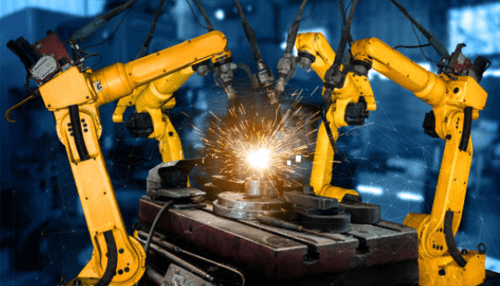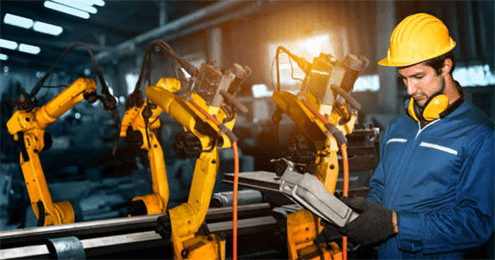Modern manufacturing necessitates the adoption of the most efficient means for accomplishing tasks. Under welding, there is manual and robotic welding. Manual welding is where pure human labor is involved in the welding process. However, robotic welding involves the use of machines better known as robots, to perform welding.
The choice to utilize a robot for welding purposes is highly dependent on the kind of project at hand. The robot welding process is accomplished when the tool in the welding robot arm burns to melt metallic to connect the wanted pieces. You may want to consider the pros and cons of robotic welding prior to making a decisive choice between manual and robotic welding.
Robotic welding is mainly sorted after due to its advantages, which are as follows.
Pros of Robotic Welding
1. Enhanced efficiency
Efficiency in robotic welding is achieved through the shortest time robots take to accomplish projects. Robots operate at high speeds and can operate for a longer period than humans. Unlike humans who tire and have to go for breaks or go on leave, robots require none of that. the robots can operate round the clock 24/7.
Given that robotic welding operates at high speeds and utilizes a very minimal amount of time to accomplish tasks implies increased output. Increased levels of output. Furthermore, a soldering iron is a must to have when you are on your welding job so there are many well known brands and online stores where you can get a soldering iron kit as well as the soldering iron robots which are again a must to have for robotic welding.
2. Increased safety
Welding is a very dangerous job. There is electricity utilized to generate fire that is utilized for welding purposes. Robotic welders often equip their selves with safety features even as they go to tackle the welding task.
Robotic welders have diverse safety features meant for protecting welding employees against the welding arc, the high temperatures, plus the excess brightness. A safe working environment is beneficial to the business as workers become more fruitful and are more satisfied with their jobs.
Injuries on employees and equipment damages can be very costly to a business. Injured employees can sue the company seeking damages to be paid to them, or so that the company responsible can take the necessary steps of ensuring that the injured employees receive the required medical treatment. Hence, the installation of safety features while dealing with robotic welding saves the company lots of money.
3. Better accuracy
Robotic welding is ideal when dealing with tasks that involve the exertion of repetitive motions on a given point countless times. Dealing with repetitive tasks can cause one to get bored and tired of doing the same thing over and over. Hence, if relying on human labor to accomplish the welding task, you can be sure of getting some errors in the job.
Humans are to error, and even human welders with decades of experience can still err. On the other hand, robots are very accurate. Work that is accomplished through robots is very accurate and exact. Robots operate non-stop and can maintain equal levels of attentiveness throughout a project.
4. Reduced waste
Robots operate at greater extents of precision, which implies fewer mistakes, and hence minimal waste generated. Manual welding results in excess waste, especially if the welder has a minimal level of experience. Parts may be welded together by mistake, or there could be welded materials with weak joints.
The high levels of accuracy robots operate with contribute to fewer mistakes to none. As a result, waste material from errors is minimal, implying greater work efficiency.
Cons of Robotic Welding
Higher start-up costs
Robotic welding necessitates the acquisition of robots and the training of robot operators. The cost of doing so may be too high since the welding jobs you may be having are few. Hence, outsourcing the robotic welding service could be the most ideal cost-saving act.
Less flexibility
Robots are less flexible compared to humans. Human welders can easily react to unexpected circumstances in ways that robots cannot. For any change to be instituted in a robot, the operator has to stop the robot’s operations to reprogram it. Large projects would consume much more time especially if reprogramming was part of the welding process.
Not feasible for future projects
Smaller projects require a minimal amount of time to accomplish. The time it usually takes for a robotic welding machine to be set up for operations is a bit long. Hence, if the project at hand is small, it would not be ideal to set up the robot as the time it would take to set it up would be much more than the time it would have taken to accomplish the task manually.
Conclusion
Robotic welding is ideal for large jobs. They are advantageous in that they enhance efficiency, increase employee safety, reduced material waste, and boost accuracy. Some of the robotics disadvantages include high upfront costs, minimal flexibility, and the lack of feasibility with small projects.



